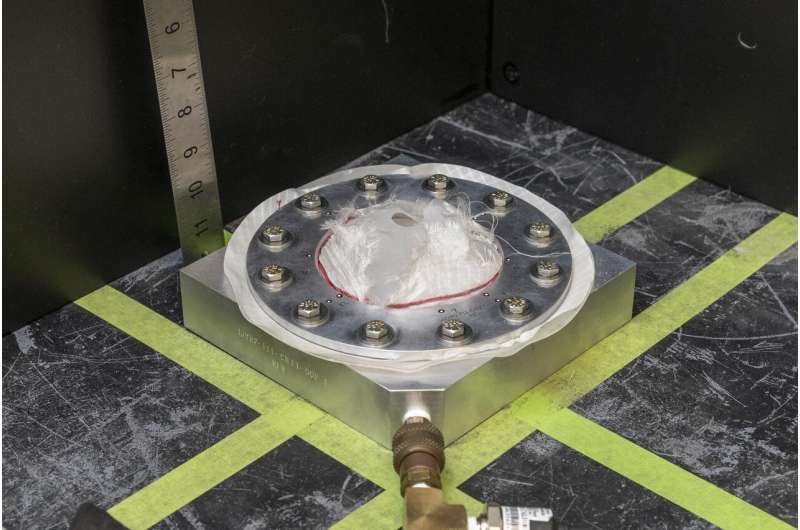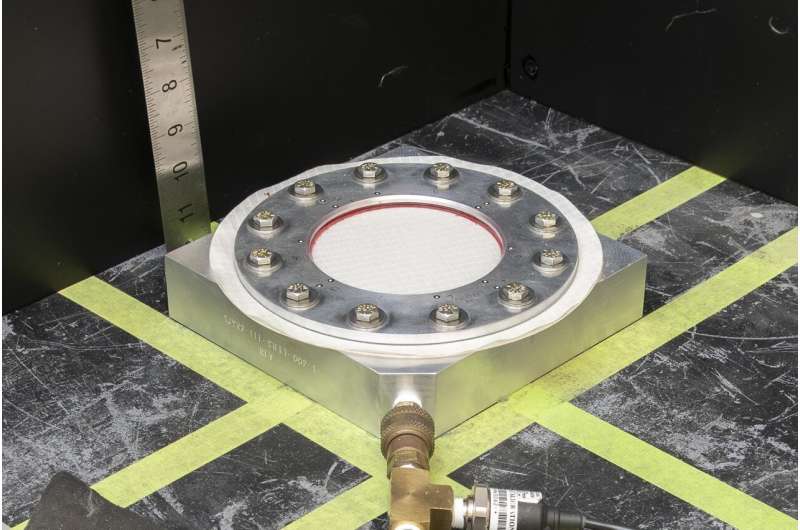Landing rovers and helicopters on Mars is a challenge. It's an even bigger challenge when you don't have enough information about how the parachutes are enduring strain during the descent to the surface. Researchers at NASA's Armstrong Flight Research Center in Edwards, California, are experimenting with readily available, highly elastic sensors that can be fixed to a parachute during testing to provide the missing data.
Knowing how the canopy material stretches during deployment can enhance safety and performance by quantifying the limits of the fabric and improving existing computer models for more reliable parachutes for tasks such as landing astronauts on Earth or delivering scientific instruments and payloads to Mars. This is the work Enhancing Parachutes by Instrumenting the Canopy, or EPIC, seeks to advance the ability to measure the strain on a parachute.
"We are aiming to prove which sensors will work for determining the strain on parachute canopy material without compromising it," said L.J. Hantsche, project manager. NASA's Space Technology Mission Directorate funds the team's work through the Early Career Initiative project.
Starting with 50 potential sensor candidates, the team narrowed down and tested 10 kinds of different sensors, including commercially available and developmental sensors. The team selected the three most promising sensors for continued testing.
Those include a silicone-based sensor that works by measuring a change in storage of electrical charge as the sensor is stretched. It is also easy to attach to data recording systems, Hantsche explained. The second sensor is a small, stretchable braided sensor that measures the change in electrical storage. The third sensor is made by printing with a metallic ink onto a thin and pliable plastic.
Determining methods to bond each of the sensors to super thin and slippery canopy material was hard, Hantsche said. Once the team figured out how to attach the sensors to the fabric, they were ready to begin testing.

"We started with uniaxial testing, where each end of the parachute material is secured and then pulled to failure," she said. "The test is important because the stretching of the sensor causes its electrical response. Determining the correlation of strain and the sensor response when it is on the fabric is one of our main measurement goals."
This stage of testing was accomplished in partnership with NASA's Jet Propulsion Laboratory in Pasadena, California. A high-speed version of this test, which simulates the speed of the parachute deployment, was performed at NASA's Glenn Research Center in Cleveland.
The team used a bubble test for the sensors, which simulates testing of a 3D parachute. It consists of the fabric sample and a silicone membrane sandwiched between a four-inch-diameter ring and the test structure. When it is pressurized from the inside, the silicone membrane expands the fabric and sensor into a bubble shape. The test is used to validate the sensor's performance as it bends and is compared to the other test results.
With the EPIC project nearing completion, follow-on work could include temperature tests, developing the data acquisition system for flight, determining if the sensor can be packed with a parachute without adverse effects, and operating the system in flight. The EPIC team is also working with researchers at NASA's Langley Research Center in Hampton, Virginia, to flight test their sensors later this year using the center's drone test, which drops a capsule with a parachute.
In addition, the EPIC team is partnering with the Entry Systems Modeling Group at NASA's Ames Research Center in California's Silicon Valley to propose an all-encompassing parachute project aimed at better understanding parachutes through modeling and test flights. The collaborative NASA project may result in better parachutes that are safer and more dependable for the approaching era of exploration.
Provided by NASA



